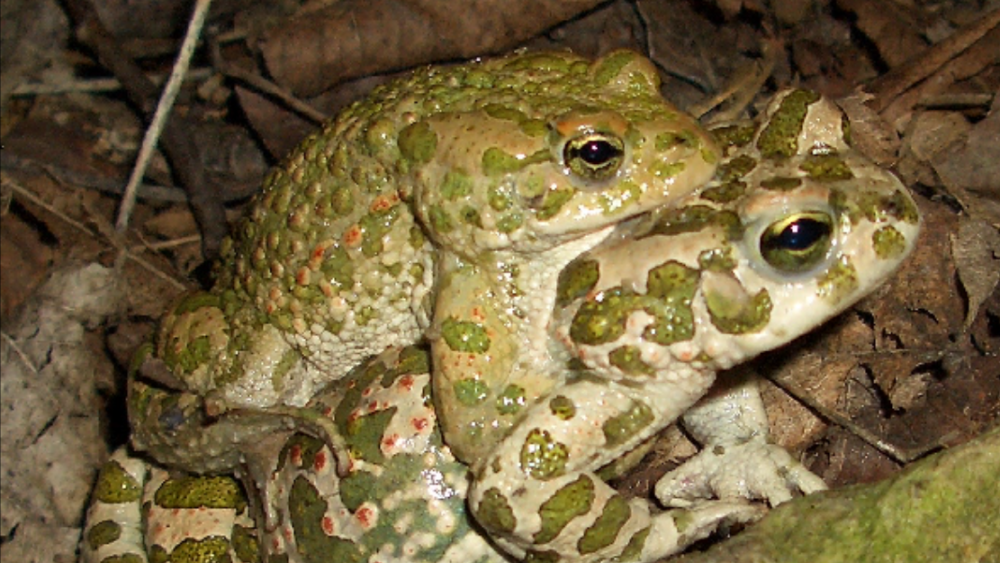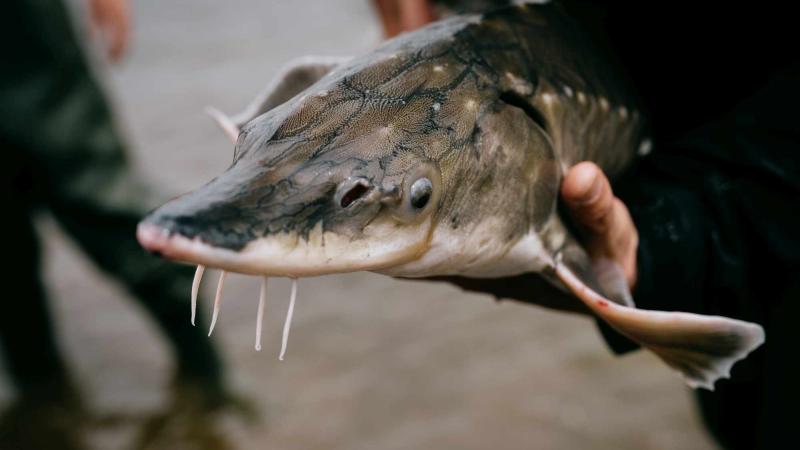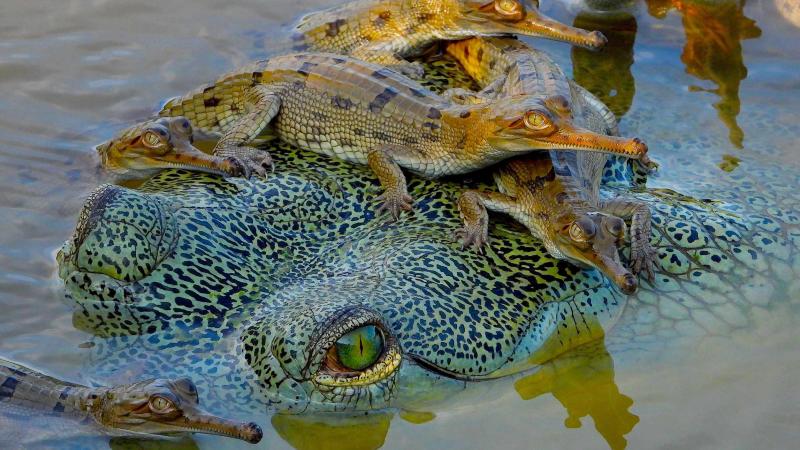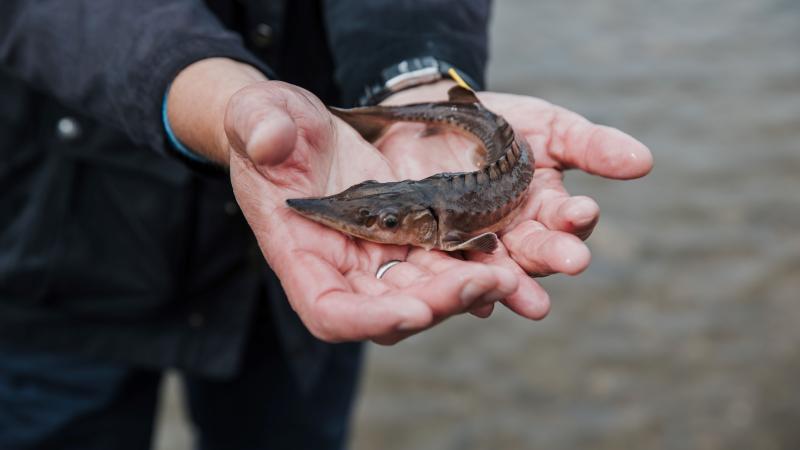
European green toad breeding pair. | Foto: Matthias Stöck
In most vertebrates, two separate biological sexes develop, which with few exceptions are determined by sex chromosomes. However, amphibians often have microscopically indistinguishable sex chromosomes, with either males (XY) or females (ZW) having different sex chromosomes.
The genomes of amphibians are usually significantly larger than that of humans. It is therefore not surprising that so far only a single sex-determining gene has been identified in a frequently studied model species, the African clawed frog. Whether other genes are also important for sex differentiation in the more than 8600 amphibian species has remained unknown.
Now, a research team led by IGB has identified a gene locus for sex determination in the European green toad. "Genetic sex determination in amphibians is still a major knowledge gap. However, it is very important to understand the genetic regulation of reproduction in amphibians because, as semi-aquatic creatures, they react very sensitively to hormonally active environmental pollutants, the so-called endocrine disruptors, before and after metamorphosis," said IGB-researcher PD Dr. Matthias Stöck who led the study.
The sequencing and analysis of the complete genomes of a female and a male green toad have now made it possible for the first time to identify structural differences between the otherwise very similar X and Y chromosomes. This sex-determining locus comprises a long non-coding RNA (lncRNA) and is located in the 5'-regulatory region of the gene bod1l. "The Y-specific non-coding RNA is only expressed in males, which suggests that this locus could trigger male sex differentiation," said IGB-researcher Dr. Heiner Kuhl, first author of the study.
The identified sex-determining gene locus was also detected in several closely related green toad species. In the next step, the researchers want to validate their result using the CRISPR/Cas9 technique by specifically controlling the expression of the identified gene bod1I.
"Further investigations into the function of the newly identified locus will provide important insights into the epigenetic control of sex differentiation, which may also be relevant for other animal species," said Prof. Christoph Winkler from the National University of Singapore. The co-corresponding author of the study is currently a guest scientist at IGB.







